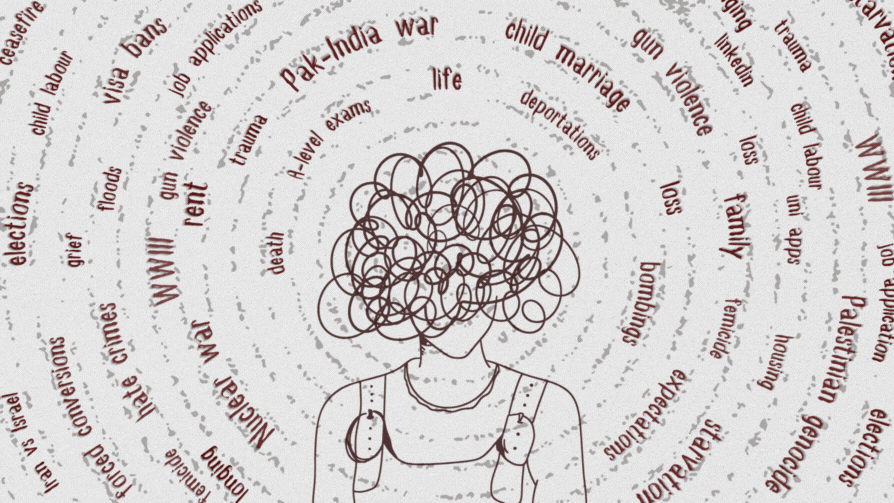Food Stories: Punjabi Mutton Masala
Eid-ul-Azha brings with it flavours of red meat, and although white meat holds much significance as the healthy meat of choice for many, no meat holds a candle to mutton and lamb made right.
My first recollection of Bakra Eid celebrations (Eid-ul-Azha) is from the month of October, a time alive in the memory bank from the wonderful era of the seventies; I was a youngling and listened fascinated as my father relayed the glorious religious history that marks the blessed event we celebrate today.
Being the youngest, at the time, I tagged along with my father and vividly remember buying a goat for Rs. 700, a beautiful tall muscular animal that was to be pampered until the morning of the qurbani (sacrifice), and then enjoyed as delicious family lunch.
The magic of meat and masala
In the city of Peshawar, and its surrounding areas, meat rules as it does in all the other provinces of Pakistan. Historically speaking lamb and goat meat (mutton) has always been a favoured meat of south Asia, middle east, central Asia, and the Mediterranean.
Jerusalem: A Cookbook, written by Yotam Ottolenghi and Sami Tamimi, says the following about lamb and goat meat:
Before chicken, lamb and mutton were the key meats in the Palestinian diet. Shepherds were prevalent all around the hills when we were children, and still are now, although to a lesser extent. Lamb is slaughtered on special occasions and is a sign of celebration – births, weddings, return of a family member – and religious holidays, such as Easter and Eid-ul-Azha (festival of sacrifice or “Greater Eid”).
It is believed that the ruling Mughal’s hearty appetite for beef, lamb and goat clashed with the dietary habits of many of their subjects in the sub-continent, and their cooking of meat lacked in spices and was succulently cooked in its own juices, that of exotic fruits and fragrant spices, such as saffron and fennel. However the people of the plains enjoyed cooking their foods, meats and vegetables, in a host of spices, giving it a depth and flavour like none other.

The Oxford Encyclopedia of Food and Drink in America, edited by Andrew F. Smith, says the following about usage of masala in Punjabi cuisine.
Spices are an integral part of the Sikh-American (Punjabi) diet. Cooks have their preferences based on personal taste but the trinity of turmeric powder, cumin, and coriander seeds is certainly the most popular and is usually sautéed with the aromatics. There are at least twenty-five spices that are used often, and the world famous Punjabi mixture called garam masala is most often used in the preparation and cooking process. Traditionally, the spices are warmed in ghee (clarified butter) and form an important culinary influence of the ancient Ayurveda (science of life).
Lizzie Collingham, a historian, opines;
The consumption of meat was associated with strength and valor. It was considered that environmental essences contained in the soil were transferred from plants and then into herbivores, which in turn were eaten by carnivores. Each transference created a more powerful distillation of essences. Meat was thus the most intense of foods.’
Punjabi Mutton Masala

Punjabi Mutton Masala is a meat dish, simple and fabulous all at once. Small cubes of lamb or goat are cooked in whole garam masala, onions, tomatoes, green chillies, salt and preferably animal fat. The fresh meat is thought to provide the fat base for the cooking, and is meant to be savoured directly from the wok or pot it is cooked in with a side of hot naan.
My two favourites every Eid-ul-Azha were namkeen gosht, for this was made just once a year with the fresh meat of the qurbani ka bakra (sacrificed animal), and the special karahi gosht made by my father, and I can add a third to the list, namely mutton masala/bhona gosht. The recipe I share with you is my own; here it is, celebrating Eid-ul-Azha from my kitchen to yours.
Ingredients

2lbs mutton, small cubes
Oil to taste
1 black cardamom, 5 to 8 peppercorns, 1 cinnamon sticks, 2 bay leaves, 5 cloves
3 chopped onions
4 to 5 medium sized tomatoes
Ginger and garlic, fresh, 1 tsp. each
Pinch of turmeric
Red chili powder and salt to taste
1 cup yogurt
1 tsp. coriander powder
½ garam masala
Chopped green chillies, chopped cilantro, lemon wedges for garnish.
Method
Fry onions until golden brown, adding whole garam masala and ginger garlic.
Fry for a few minutes, adding meat.
Stir for a few minutes adding tomatoes and the rest of the ingredients, stir on high heat, seal pot with foil, cover with lid and cook on low heat until tender and succulently juicy.
The tender meat falls off the bone and makes a perfect main course, enjoy with garnish and a side of naan.
Bisma Tirmizi is a former Dawn staffer, currently a freelance journalist. She loves food, music and simple pleasures. She can be reached at bismatirmizi1@gmail.com. Follow her on Facebook here.














Comments